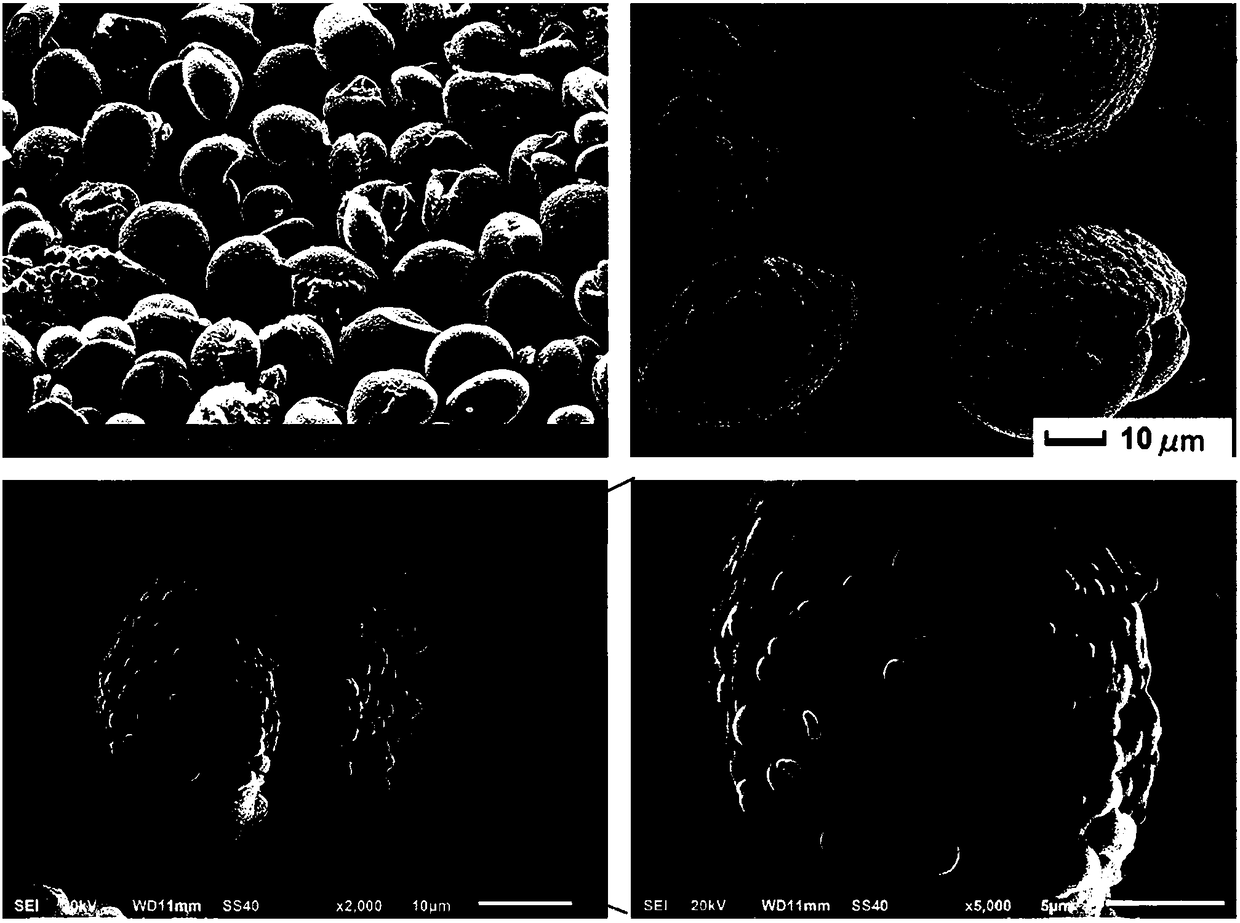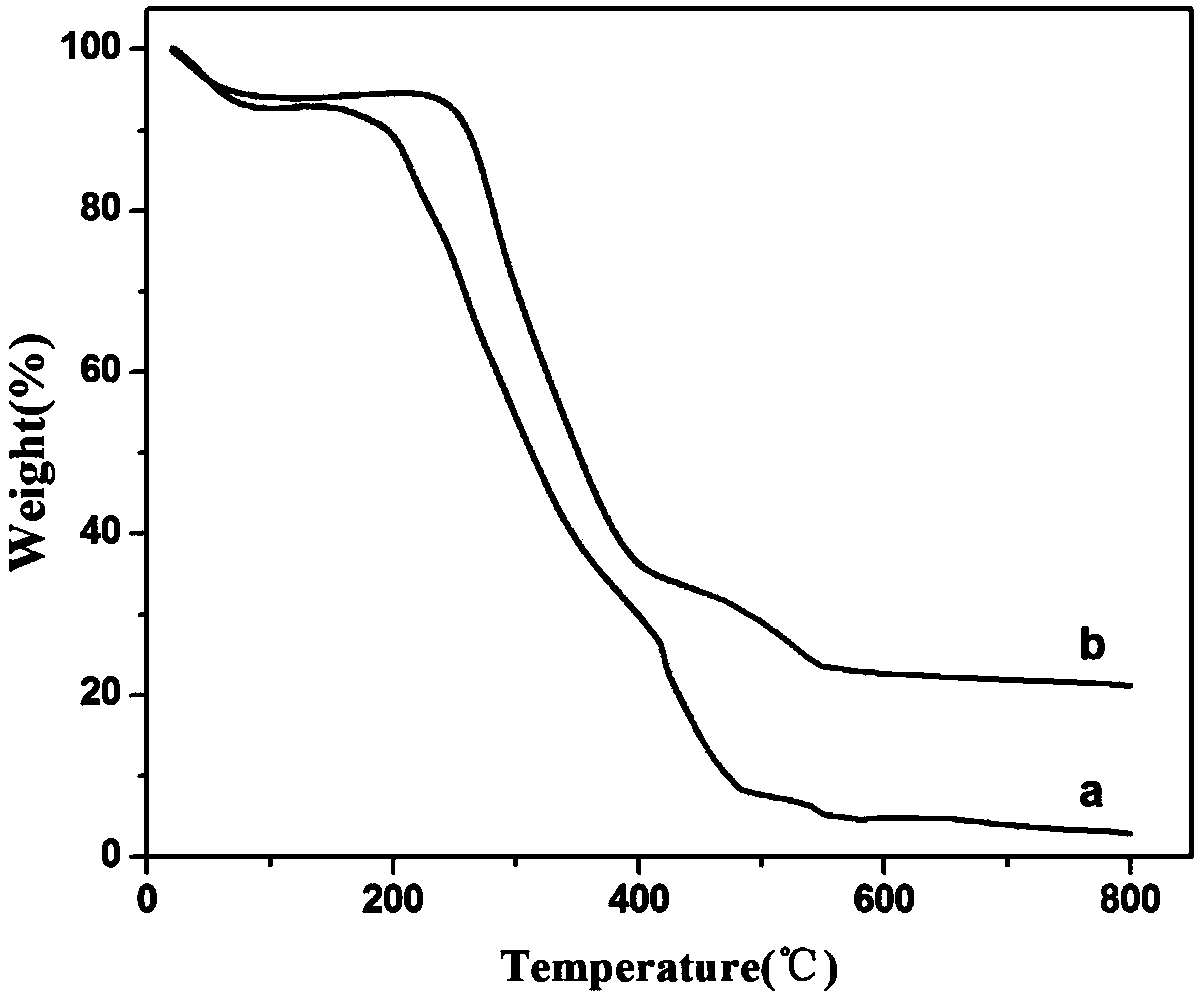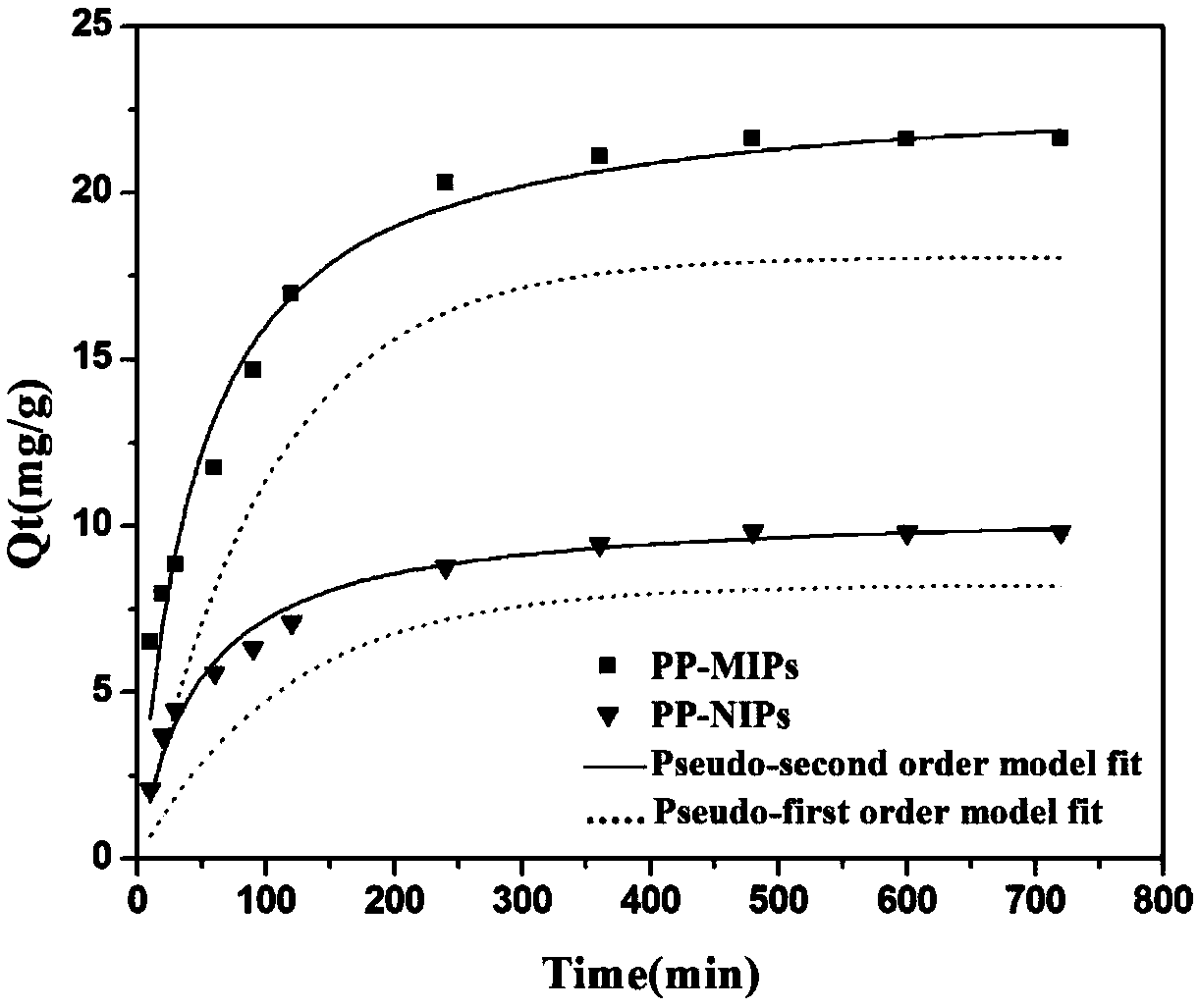Preparation method and application of a spiramycin molecularly imprinted polymer on the surface of pine pollen
A technology of spiramycin and molecular imprinting, applied in chemical instruments and methods, other chemical processes, water/sludge/sewage treatment, etc., can solve the problems of endangering human health, spiramycin residues, etc., and achieve pesticide-free Residual, easy to control, single flower source effect
- Summary
- Abstract
- Description
- Claims
- Application Information
AI Technical Summary
Problems solved by technology
Method used
Image
Examples
Embodiment 1
[0028] Spiramycin 0.084g, MAA 0.04mL, dissolved in 20mL acetonitrile, stirred magnetically at room temperature for 4h; then added 0.2g pine pollen, 20mg AIBN, 0.3mL EGDMA, 30mL acetonitrile, 2 , magnetically stirred at 65°C for 24 hours; after the reaction was completed, the solid polymer was centrifuged, cleaned with absolute ethanol, dried at 50°C, and set aside. Spiramycin molecularly imprinted polymers (PP-MIPs) on the surface of pine pollen. Wrap part of the polymer with filter paper and put it into a Soxhlet extractor, wash off the spiramycin molecules with a mixed solution of anhydrous methanol / glacial acetic acid (V / V)=9:1-1:9, until the bottom extract Until the spiramycin molecule was not detected in the pine pollen, non-imprinted polymers (PP-NIPs) on the surface of pine pollen were obtained by drying at 50°C.
[0029] Table 1 is the specific surface area and average pore diameter of PP, PP-MIPs and PP-NIPs in Example 1. By comparison, it can be seen that the speci...
Embodiment 2
[0041] Spiramycin 0.084g, MAA 0.04mL, dissolved in 20mL acetonitrile, stirred magnetically at room temperature for 4h; then added 0.2g pine pollen, 20mg AIBN, 0.3mL EGDMA, 30mL acetonitrile, 2, magnetically stirred at 65° C. for 4 h; after the reaction was completed, the solid polymer was centrifuged, washed with absolute ethanol, dried at 50° C., and set aside. Spiramycin molecularly imprinted polymers (PP-MIPs) on the surface of pine pollen. Wrap part of the polymer with filter paper and put it into a Soxhlet extractor, wash off the spiramycin molecules with a mixed solution of anhydrous methanol / glacial acetic acid (V / V) = 1:9, until it cannot be detected in the extract below The non-imprinted polymers (PP-NIPs) on the surface of pine pollen were obtained by drying at 50°C.
Embodiment 3
[0043] Spiramycin 8.4g, MAA 4mL, dissolved in 2000mL acetonitrile, stirred magnetically at room temperature for 8h; then added 20g pine pollen, 2g AIBN, 30mL EGDMA, 30mL acetonitrile, 2 , magnetically stirred at 65°C for 24 hours; after the reaction was completed, the solid polymer was centrifuged, cleaned with absolute ethanol, dried at 50°C, and set aside. Spiramycin molecularly imprinted polymers (PP-MIPs) on the surface of pine pollen. Wrap part of the polymer with filter paper and put it into a Soxhlet extractor, and wash off the spiramycin molecule with a mixed solution of anhydrous methanol / glacial acetic acid (V / V) = 9:1 until it cannot be detected in the extract below The non-imprinted polymers (PP-NIPs) on the surface of pine pollen were obtained by drying at 50°C.
[0044] 2. In order to clarify the technical scheme and technical purpose of the present invention, the present invention will be further described below in conjunction with specific implementation examp...
PUM
 Login to View More
Login to View More Abstract
Description
Claims
Application Information
 Login to View More
Login to View More - R&D
- Intellectual Property
- Life Sciences
- Materials
- Tech Scout
- Unparalleled Data Quality
- Higher Quality Content
- 60% Fewer Hallucinations
Browse by: Latest US Patents, China's latest patents, Technical Efficacy Thesaurus, Application Domain, Technology Topic, Popular Technical Reports.
© 2025 PatSnap. All rights reserved.Legal|Privacy policy|Modern Slavery Act Transparency Statement|Sitemap|About US| Contact US: help@patsnap.com



